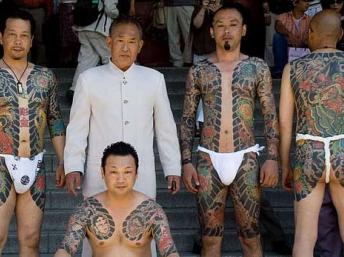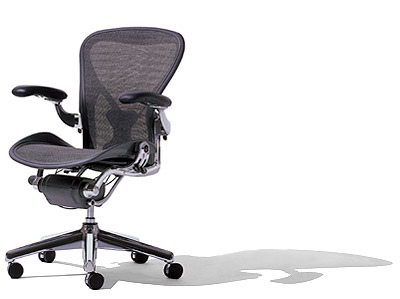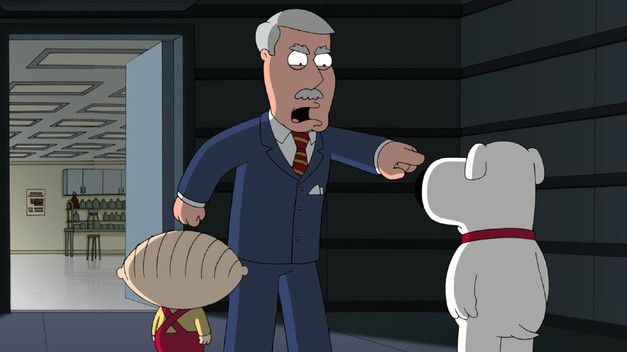Lowballing Hisashi Iwakuma
Lonnie, the big cheese at Mariner Central, harrumphs ...
Could you please stop using the expression "lowball"? To me, it means that nothing else matters other than trying to mess a player over, and I really don't think that Zduriencik would have done that.
.
=== Webster, Dept. ===
If you don't care for the term "lowball" then out of consideration for our friendship I'll stop using it, sure. :- ) You might have to remind me once or twice ... >:- ]
Certainly there are words that have different connotations to different people. When I first started in public speaking, there was a gentleman farmer who asked me not to use the word Kill. He said, "that's what we use when we kill an animal and don't feel bad about it. Like, why don't we kill that pig." Didn't mean that to me, but ...
The dictionary gives two definitions of the word Lowball: (1) to quote a price that is lower than the eventual cost, or (2) to give an unfairly low offer. Me, I don't attach it to the attitude of being slimy or exploitative. If I'm joking around with my friend and want to buy his table saw, I might lowball him at $50 and he's liable to give me a laugh in response. On the other hand a boss who "lowballs" you on your raise might be a slimy guy.
.
=== Fair and Balanced, Dept. ===
Okay, so in the dictionary a lowball offer is an unfair one. Did the Mariners do that to Iwakuma? Unfair is in the eye of the beholder, but it's pretty clear to me that Iwakuma is worth $10-15M per year. In a good year he's going to be worth $18-25M. He's only got to be worth 1.2 to 1.5 WAR to earn the salary he got; if you didn't theink he'd be worth twice that, you wouldn't put him in the rotation. It is understood by everybody involved that the Mariners think Iwakuma will be worth $12M, at least -- if he's healthy! -- and that their negotiating position was such that they had a chance to underpay Iwakuma.
Iwakuma was in an unusual situation, one in which his leverage was not what it would normally be. He had to decide, "Stay with the Mariners or go get a market contract?" and the Mariners exploited his weird Saturday deadline situation to sign him at 50c on the dollar. The contract is indeed unfair to him, in my view.
Somebody might respond, "Oh, I don't know that Iwakuma's necessarily underpaid. You have to set a % chance that he gets hurt. Sensible but not accurate, in my view. When EVERYbody says YEAHHH BABY! THAT'S A CHEAP DEAL!" Then by definition the deal was "unfair." Fair has the core idea of being "equal on two sides." That's what justice and fairness is. It relates to the idea of seeing both sides' point of view equally.
.
=== Snidely Whiplash, Dept. ===
Now we do have to keep things in proportion. Paying a player $14 mills for two years of playing baseball isn't exactly a mean thing to do. Dr. D remembers when Johnny Bench smilingly told the world that he was going to be the first $100,000 catcher.... was it Mike Schmidt or Ozzie Smith who got the first $1M salary?
It's an interesting philosophical question. If YOU were running a pro sports team, would that be your policy? Pay every player the least you can, and try to apply some downward pressure against the constant upward pressure on salaries? Or are there some situations in which you would avoid "underpaying" a player? I remember some NFL GM, maybe Bobby Beathard, saying that when he had a player who "overperformed" his contract, he tore it up and wrote a new one. He believed in fair contracts. Of course, he didn't get refunds when contracts were unfair to the player...
Obviously there are circumstances in which a team gives more money to a year-4 player because it wants to cultivate a positive relationship with the player, and doesn't want to go through the ugly arbitration process (in which the player sits there and listens to detailed arguments about his shortcomings).
.....................
Does anybody know what Iwakuma's tax rate is? Does he pay income tax to the IRS, or to Japan, or to both?
...................
Dr. D signs off on the general philosophy that MLB clubs are entitled to fight against upward pressure on salaries; he doesn't sign off on the idea that all players must be paid as little as feasibly possible in all situations.
I don't think Zduriencik is an unfair man, no; as far as I can tell, he's a model of loyalty and integrity. But if I were in his shoes, I would consider (consider) resolving a personal philosophy that "I'm never doing a player harm by paying him $487,000 to play baseball." You're always talking about rich guys making deals with other rich guys as to who's going to be a little richer. It's a fundamentally different question than the one that asks, "Should you take the cloak away from a poor man?"
Hisashi Iwakuma sure did wind up with a disappointing MLB payoff, though, didn't he?
.
This week's new DVD releases include 'The Amazing Spider-Man' and 'Arthur Christmas'
One of the few movies that I sincerely regret not seeing in the movie theater this year is Marc Webb's The Amazing Spider-Man. At the time, reviews were good, not crazy-good, and I'd just spent big bucks seeing The Avengers. Also: I was about to spend even bigger bucks to see The Dark Knight Rises. With money being a little tight, I had to prioritize.
Thankfully for me (and anyone else who also missed it), The Amazing Spider-Man, starring Andrew Garfield and Emma Stone, is available on Blu-ray and DVD on Tuesday. And I'm also thrilled to report that after a very long wait, Arthur Christmas has arrived on DVD too!I'm not sure why on Earth it took so long to get the CG-animated family comedy Arthur Christmas out on Blu-ray and DVD. The film actually came out in U.S. theaters this time last year (or close to it). That's one heck of a long wait, isn't it? Either way, I have seen this film and I can highly recommend it to everyone. If you have kids, they'll adore it and yes, as parents, you'll probably enjoy it as well. The animation is fantastic and the story is really, really funny.
As for The Amazing Spider-Man, I'm moving this one up in my movie queue. I'm a little behind, though I did manage to knock out Rock of Ages (meh, it was okay), The Best Exotic Marigold Hotel (delightful) and Safety Not Guaranteed (awesome) over the weekend.
Speaking of Safety Not Guaranteed, let's discuss Mark Duplass, shall we? He stars in Safety, and he's phenomenal. I've got a big crush going on him. Apparently, his work in the indie dramedy Your Sister's Sister, alongside the likes of Emily Blunt and Rosemarie DeWitt, is also outstanding. The film garnered rave reviews from critics, and it's out on DVD this week as well.
The choices, once again, are pretty solid this week, no matter what your favorite genre. Has anyone seen any of these movies already? I can recommend Arthur Christmas, but I'm not 100 percent sure on the other two.
Secret of the Secret Sauce revealed!
McDonalds' Big Mac Secret Sauce is no longer such a secret. And it isn't, as many people have claimed, just mayonnaise and relish or just mayonnaise and ketchup. Oh no, my friend! It is mayonnaise, sweet pickle relish, yellow mustard, white wine vinegar, garlic powder, onion powder and paprika.
Corruption 1 - The Yukuza at Fukushima
I have covered Fukushima extensively in these posts but I have just come across something that I had not seen before. There have been recent articles lately about the involvement of the Yakuza in the Japanese nuclear industry and the presence of members of the Yakuza at the Fukushima nuclear plant that suffered the catastrophe in March of 2011.
The Yakuza are a Japanese criminal syndicate with extensive ties to business and politics in Japan. They are acknowledged and regulated by the government. Their money comes from “extortion, blackmail, construction, real estate, collection services, financial market manipulation, protection rackets, fraud and a labyrinth of front companies including labor dispatch services and private detective agencies. They do the work that no one else will do or find the workers for jobs no one wants.” One Yakuza member said that when a woman reaches the bottom, the only work left is the sex trade. When a man reaches the bottom, the only work left is at nuclear reactors.
TEPCO, the company that owns the Fukushima plant, has a long history of scandals, corruption, unreported safety problems, doctored documents, altered photographs, etc. A book titled “The Yakuza and the Nuclear Industry,” was recently published in Japan. The author claims that TEPCO was not an anomaly but part of a nuclear industry rife with corrupt politicians and bureaucrats, lax regulation, bribery, lobbyists and unscrupulous companies. And the book claims that the Yakuza was right in the middle of all this.
With their ties to construction, real estate and the financial industry, it should come as no surprise that the Yakuza were involved in the construction and staffing of many of Japans nuclear plants. The author says that subcontractors paid the Yakuza to get construction contracts at Fukushima and that money intended for construction was funneled to the Yakuza.
When the author went undercover to work at Fukushima, he found that there was a two tier system of employees. The lower tier supplied by the Yakuza consisted of homeless men, unemployable men, men who owed the Yakuza money and even mentally handicapped individuals. Unlike the upper tier of employees who had good radiation protection gear and monitoring, the lower tier got poorer equipment and was not monitored as carefully for radiation exposure. There were reports from Fukushima that some employees were told to cover their radiation badges to reduce exposure readings. This all ties in with older reports I have read where homeless and older poor people were hired to clean up a nuclear spill. They were given mops and bucket and were not told how dangerous the work was.
In general, the working conditions were horrible with non-functioning temperature monitors and suits that made going to the bathroom or drinking water almost impossible. People often passed out from the heat. The masks did not filter out all of the radiation in the air and were often ill-fitting. If they went to the TEPCO staff doctors, they were given cold medicine. Anyone who complained was fired.
Many of the workers fled when the tsunami hit Fukushima. A few men stayed behind to try to deal with the disaster and it is claimed that some of them were Yakuza. After the disaster, the government raised the level of acceptable exposure and then even stopped monitoring radiation at all in some parts of the plant. The Yakuza was enlisted to find emergency workers. They went all over Japan to find people, saying “Bring us the living dead, the people that no one will miss.” The workers were poorly prepared and some were threatened when they tried to quit. If TEPCO didn’t know what the workers were going through, they should have. Now that the Yakuza involvement has been revealed, TEPCO claims that they are telling their subcontractors to cut ties to organized crime.
However questionable the involvement of the Yakuza at Fukushima, the real criminals are the politicians, bureaucrats, and businessmen who, through a combination of greed, corruption and incompetence, allowed a preventable disaster to occur which could ultimate threaten human civilization.
Yakuza member from Jorgo/Open access:
Symbols of the 90s: The Aeron Chair
Slate has a great profile about the design and manufacturing history of the Aeron chair. I have to confess, I had never considered the chair's origins before. For one thing, I always assumed that Herman Miller had designed it. (Isn't that why they called it the "Herman Miller Aeron Chair"?)
One surprising secret to being a successful writer
Sometimes it's easy to overlook the obvious. Many aspiring writers spend a lot of time contemplating the perfect writing location, hopping from café to café, from desk to couch to kitchen counter. We trade productivity secrets and "hacks" like the Pomodoro method and Mac Freedom.
"The Old Man And The Big C"
This episode kind of struck me as being like a casserole of leftovers. You've got your brown rice from the other night, some pieces of steak from last Thursday, and maybe you whip up a batch of egg noodles to help stick the whole thing together. The end result is palatable, but just barely. It's a whole bunch of pieces of stuff that would have been better if they were fresher, and on their own. You mash it all together and it's just a mess.
"Adventures in Baby Getting"
The trope that "mom wants another baby and dad flies into a tizzy" is a well-worn staple of sitcoms. In fact, it's so common that I could have sworn The Simpsons had done it in the past. But I guess not. I guess I must have been thinking of the thousands of other "mom wants another baby" episodes.
Hurricane Sandy: The result of weather modification technology?
I'm a little surprised (and frankly a little disappointed) to see so few conspiracy theories springing up in the wake of Hurricane Sandy. But one theory that crops up over and over is the idea that Sandy was created by the secret ability of governments to control the weather. Either accidentally or deliberately creating a superstorm.
Writers, don't get fleeced by "paid feedback" services!
It seems like no matter what artistic branch you practice, there is a healthy crop of people out there who are ready and willing to take your money in return for basically nothing. Although the details vary depending on the art form, they all basically come down to the same thing: "I will evaluate your work for $X."












